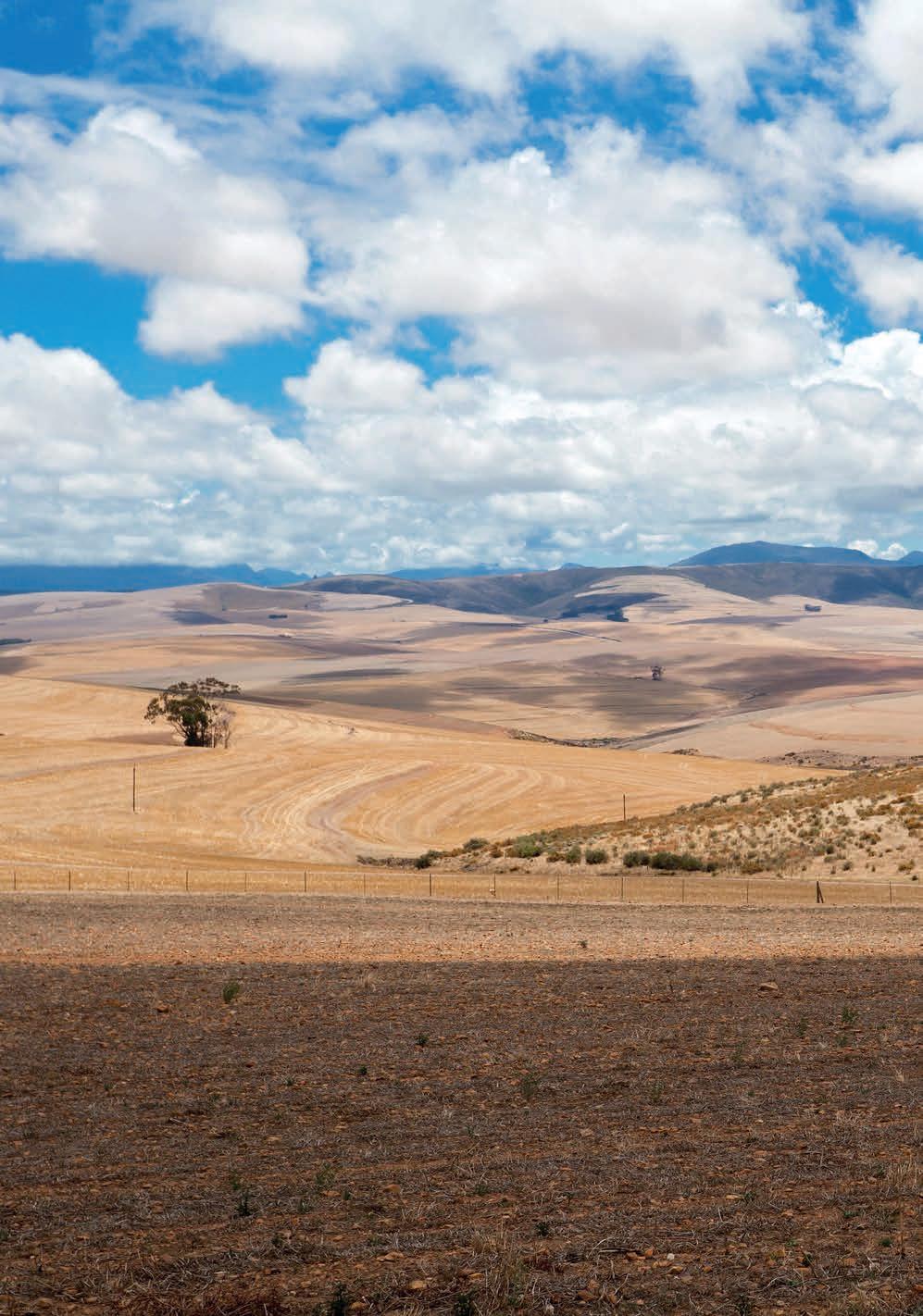
3 minute read
Increasing biodiversity in dryland cropping systems
by WCDOA pubs
by Dr Johann Strauss, johannst@elsenburg.com
TThere is worldwide concern about the loss of biodiversity and consequently, ecosystem services. This is especially true for agricultural landscapes. Monoculture production is still practiced on a large scale across the world, although the adoption of conservation agriculture principles has turned the tide on this practice. Current estimations are that the practice is growing by 6 million hectares per year, currently 180 million hectares in total.
Data from around the world underline the improvement of cropping systems when at least three crop types are used in rotation. Results from the long-term trial at Langgewens Research Farm support the findings worldwide. The systems tested at Langgewens are shown in Table 1.
The average wheat yield in a monoculture over a 20-year period is 2 566 kg/ha. With the introduction of a single canola crop, the average increased to 2 925 kg/ha (Figure 1), but with each consecutive wheat-on-wheat crop following the canola, the average yield dropped by 216 kg/ha for the second year of wheat, and 292 kg/ha for the third year. The introduction of legumes, either as a cash crop or legume pasture, increased the yield even further (see Figure 2).
Dryland wheat forms the backbone of cereal production in the Western Cape. Rotation crops include barley, canola, oats, lupine, medics and lucerne, depending on the specific area within the province. This diversity is not sufficient. No-till and crop rotation have improved our soil carbon content over the past 20 years and yields have increased along with these results, but it seems like we have hit a plateau in our production. The question now is, what next?
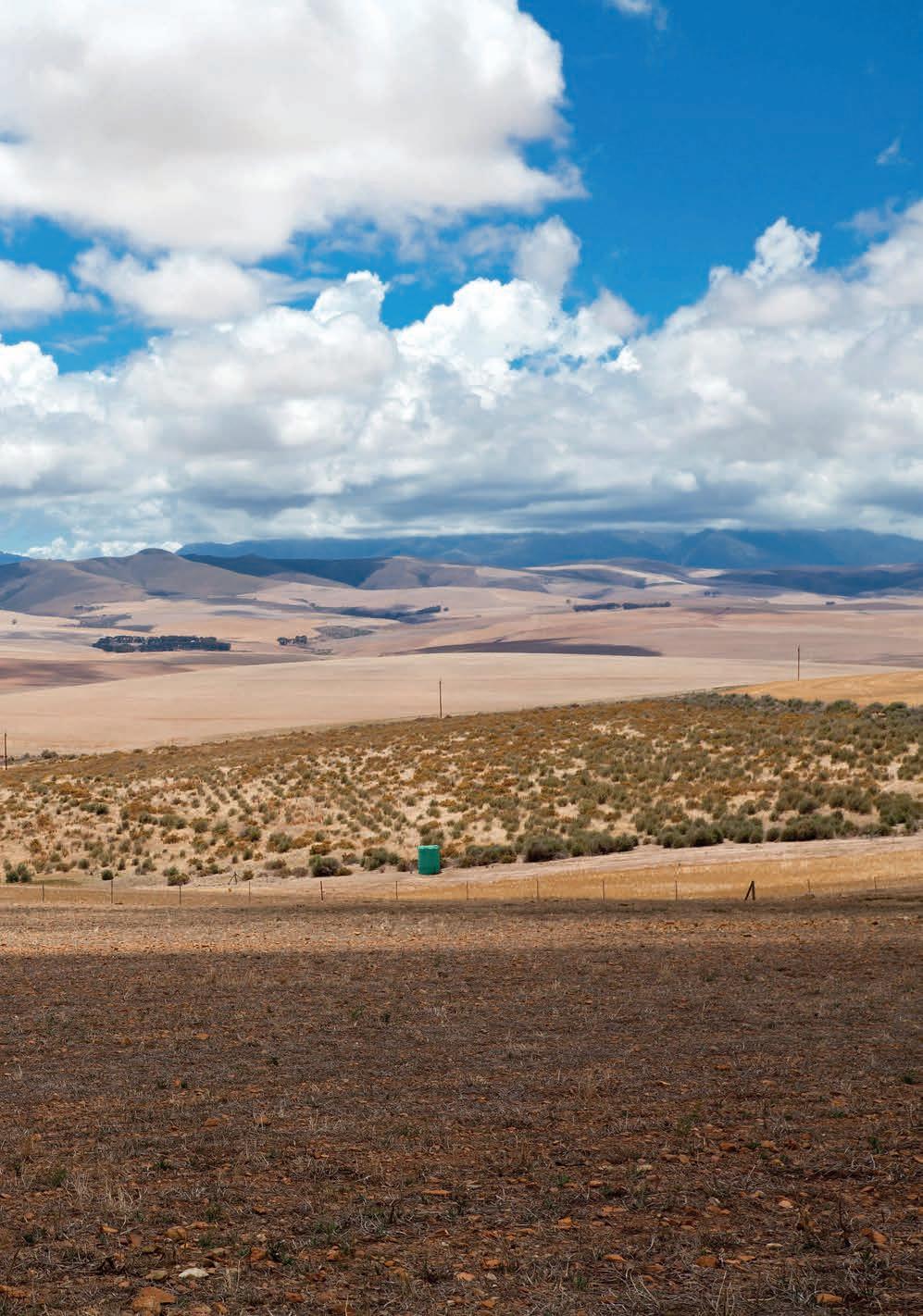
Regenerative agriculture is aimed at the improvement of biodiversity in cropping systems by the inclusion of multispecies cover crops and animals. This extension of conservation agriculture is making serious headway in the mid-western states of America. Results from the Brown’s farm showed an improvement in soil carbon when no-till was introduced; another improvement followed when crop rotation was introduced. The introduction of single-species cover crops showed no real further improvement of the soil carbon content. It was only with the inclusion of multispecies covers that the carbon content showed improvement again and the improvements increased significantly after the inclusion of animal grazing on the cover crops. Ecosystem services have improved to such an extent that they are no longer applying any fertiliser or artificial control of diseases or insects in their cropping systems.
Under local conditions there are two ways in which to increase the biodiversity of the system. The first is to introduce new cash crops or pastures into the system or secondly, to include multispecies cover crops. The inclusion of new cash crops could improve the spreading of risk for our dryland producers, but will need testing in
Table 1: Cropping sequence within the eight-crop rotation systems tested at Langgewens Research Farm.
System Crop sequence
WWWW wheat wheat wheat wheat
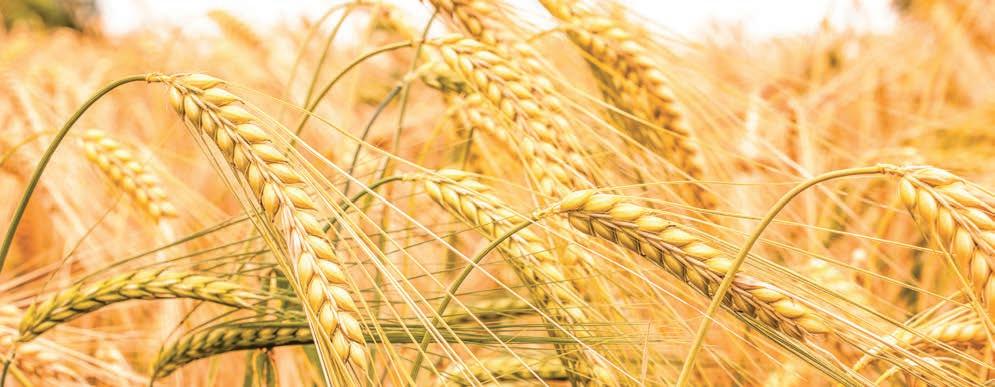
CWWW canola wheat wheat wheat
LWCW lupine wheat canola wheat
LCWW lupine canola wheat wheat
MCMW medic pasturecanola medic pasturewheat
MWMW medic pasturewheat medic pasturewheat
MkCMkW medic/clover pasture canola
Mk+SCMk+SW medic/clover pasture + saltbush canola medic/clover pasture wheat medic/clover pasture + saltbush wheat
Figure 1: The effect of crop sequence on the yield of wheat. (W = wheat, C = canola, L = lupine and Mk = medic or medic/clover pastures) order to evaluate the production feasibility and market availability. The inclusion of cover crops appears to be the easier route, but the question remains how the producer benefits financially from the inclusion of cover crops, because profitability is still an integral part of sustainable farming.
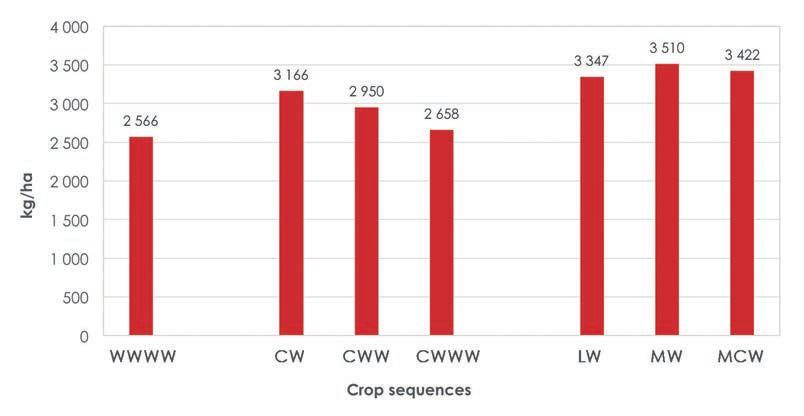
Figure 2: The average percentage wheat yield increase in different crop-rotation systems compared to wheat monoculture as tested at Langgewens. (W = wheat, C = canola, L = lupine, M = medic, Mk = medic clover and S = saltbush).
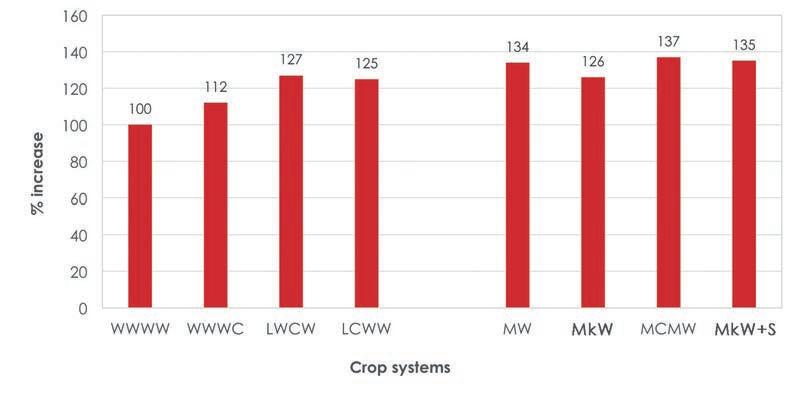
Several projects that include cover crops have been launched by the Western Cape Department of Agriculture in the past four years. The search was for possible combinations of multispecies cover crop mixes and management practices of such cover crops. The impact of these are also measured in terms of follow-on crop production in wheat and barley. The aim of this project is to evaluate both winter and summer cover crops.
Results from these studies have shown improvements of yield when compared to normal production practices. One example comes from Tygerhoek Research Farm where barley was produced in 2017 on the same area where different cover crop mixtures were planted in 2016. The barley yield was almost double following the different mixed cover crops compared to the control.
An interesting observation from the trials is that foliar diseases usually associated with the individual crops are non-existent in the mixtures. This aligns with findings at the Minoken research farm in North Dakota, where a mixture of wheat, barley and oats was planted next to strips of the individual crops. The single crop strips showed disease problems while the combined strip was healthy.
An MSc study on the effect of three different cover crop management strategies (grazing vs mulching vs haying) on succeeding wheat production showed varying yields (between 2,1 t/ha and 2,6 t/ha) but no statistical difference between treatments.
Conclusion
The utilisation of cover crops can enable smallholder and commercial farmers to incorporate cover crops and livestock into cropping systems. This will improve diversity in cropping systems and spread the economic risks over different commodities. AP










